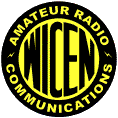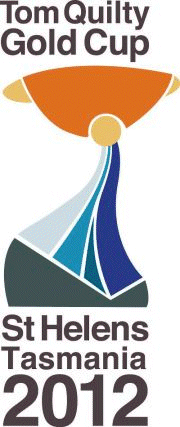

 |
 |

WICEN sets the bar
at a new height.
The 2012 Tom
Quilty Gold Cup national equine endurance championships were held at St Helens
on the East Coast of Tasmania on 9th June 2012.
WICEN provided
checkpoint crews and communications between checkpoints and Base.
Handheld and mobile radio communications between ride officials was also
supplied. Other support included
track mapping and web based distribution of competitor tracking information.
Endurance riding
has been an organised sport in Australia since 1966.
One person inspired by the concept of a long distance competitive horse
ride was R. M. Williams. An invitation was extended through his magazine for
people interested in conducting Australia's own 100 miles in one day ride.
It was decided
if the Americans could do it, so could the Aussies! The venue would be in the
Hawkesbury district, near Sydney, New South Wales.
R. M. Williams
wrote to his friend Tom Quilty, a great horseman and cattleman in the Kimberly
area of Western Australia. Williams asked for his support for the 100 miles
ride, and Quilty donated $1,000. This was used to make a gold cup, the prize for
the winner of the event. This is a perpetual trophy, and the ride was named the
Tom Quilty Gold Cup in his honour. The original Gold Cup now resides in the
Stockman's Hall of Fame, in Longreach, Queensland.
Cash prizes were
originally offered as incentive for competitors, however, at the last minute it
was pointed out that local by-laws prohibited racing for money, over public
roads. A meeting of riders and officials was held, and all resolved to ride for
the satisfaction of simply participating, and for the honour of wearing the
handsome silver Quilty buckle. The Quilty buckle is still a highly regarded
prize in endurance with those who earn one treasuring it as equivalent to an
Olympic Gold Medal.
The sport grew
over the next several years, with fifty mile rides being conducted in all the
states, and the annual Tom Quilty Gold Cup 100 mile ride in NSW.
Endurance riding began to be accepted as
part of the horse scene, with Williams’s Hoofs and Horns magazine giving the
sport coverage.
The Quilty was
considered as the National endurance ride, with its location being fairly
central for riders, except for those in Western Australia. In 1986, a referendum
of all endurance riders in Australia resulted in the decision to move the Quilty
from state to state in rotation. This gave endurance riders in each of the six
states to have the chance to compete in the Quilty in their home state, and not
have to travel large distances to compete.
The rest is
history and St Helens was the venue for the 2012 Tom Quilty Gold Cup!
Due to Bass
Strait transport difficulties and expense, the field this year was low at 114,
compared to the more normal two to three hundred.
The 160km ride
is in five legs of decreasing length. Roughly
43, 40, 35, 24 and 18km at St Helens. The front runners completed the
course in a little over 12 hours, including compulsory rest breaks, whilst the
tail enders got home in 21 hours. The ride slogan is “To complete is to win”. Those who did were awarded a Tom
Quilty silver belt buckle. 54% of
the riders completed the course. The
actual winner was awarded the Tom Quilty Gold Cup.
The ride is a
test of the riders’ and horses’ fitness but horse welfare is paramount.
The mounts are checked by a vet at the end of each leg and must meet set
requirements. So, if a rider pushes
too hard he or she will be “vetted out”.
Our team
included 17 from or with WICEN South, 4 from the Cradle Coast and 6 from the
Northern Tasmania amateur radio clubs.
Local volunteers assisted as time recorders and runners.
In all, almost 40 people were involved in our direct tasking.
In addition, a further ten ride officials were provided with radio
communications on commercial VHF and UHF frequencies licensed to WICEN.
Our advance
party arrived in St Helens on Wednesday 6th June, being joined by the
others between then and the ride start at midnight on Friday night.
Our primary task
was to look after 13 checkpoints at six different locations in the country
around St Helens, plus our base station in town.
This job included establishing and maintaining radio communications
between the checkpoints and base, recording and transmitting to base the time of
passing of each rider, calling for any assistance needed, for example a float
for a lame horse, and making sure water troughs were topped up.
In addition, self preservation in the close to, or sub, zero night time
temperatures needed some attention.
Video evidence from at least one checkpoint location indicated that entertaining
weary riders was also a focus.
The checkpoint
radio network on 2 metres was initially via a repeater at one of the
checkpoints. Though not totally
necessary, the repeater ensured excellent comms throughout.
Later, when the more difficult checkpoints were completed and closed, the
network was switched to simplex.
Stations were varied in equipment with various mobile rigs and antennae ranging
from vehicle whips to collinears on 6 to 9 metre masts.
The repeater was an Icom FR3000 with 1.8MHz offset
We had worked
the area several times before so little prior testing and survey was needed.
These earlier rides had included APRS and simple GPS rider tracking.
This enabled WICEN to supply the maps and elevation profiles used on the
Tom Quilty web site and in ride literature.
A secondary
function was to make the tracking data as widely available as possible, in the
shortest possible time. This was
achieved in three ways. First, as a
rider passed through the final checkpoint on each leg, details were transmitted
to Base and the rider number was announced on the PA system, enabling the
appropriate ‘strapper’ to prepare.
For the wider
availability of tracking data, a web based system was developed and used, with
great success. We have used a
spreadsheet based recording system for a few years, usually displayed on an
additional monitor so the base radio operator can keep an eye on the data entry
and interested parties can ‘sticky beak’ without breathing down the neck of the
data entry operator. Using the Excel
facility of simultaneous saving the Excel file as an html file and frequent
uploading to a web server, the data was available worldwide and rarely more than
a couple of minutes old.
Many supporters,
and some competitors, monitored progress using internet connected smart phones,
iPads, PCs etc. We also understand
supporters ‘back home’ monitored progress, including, that we know of, in
England and in Italy!
For those not
suitably equipped, an additional 1200 x 1920 monitor, in portrait orientation,
was placed in the window of the Base HQ.
The monitor was attached to its own web connected 11 inch Macbook and
displaying a scripted version of the uploaded file, so as to refresh every
minute and page scroll every 20 seconds to cover the full field, which needed
more than one screen page to display fully at a legible size.
Telstra’s 3G
network was used for upload and download and performed well.
Two independent systems were used.
The main data entry Toshiba Tecra PC using a Telstra Elite USB “dongle”.
The additional in the window display used a Telstra Elite Network Gateway
(Netcomm 3G21WB). As the file size
increased, reaching 536KB, downloads did sometimes hesitate, causing some breath
holding, but overall was quite satisfactory.
The event,
including our first ever live tracking system, was judged a huge success.
The opportunity
was taken to promote amateur radio with strategically placed signage.
The organisers gave WICEN and amateur radio in general a good write up in
a half page piece included in the full colour ride handbook.
Those taking
part were VK7s ARN, CL, DC, FLAK, FMRS, FNJS, FRIK, FROO, FTAZ, GW, KPC, KTN,
JGD, MGW, MX, NXX, TPE, TRF, TW, VAO, VKV, with Allan, Dave, Jess, Maureen,
Terry and Wayne. Thanks also to the
supporting XYLs not listed and to WICEN Victoria for passing on their Tom Quilty
communications handbook, developed for the 2009 Tom Quilty held at Tonimbuk in
Victoria.